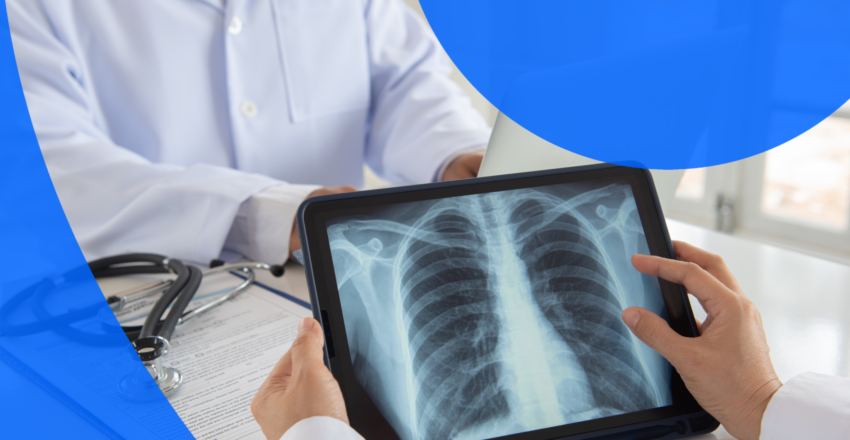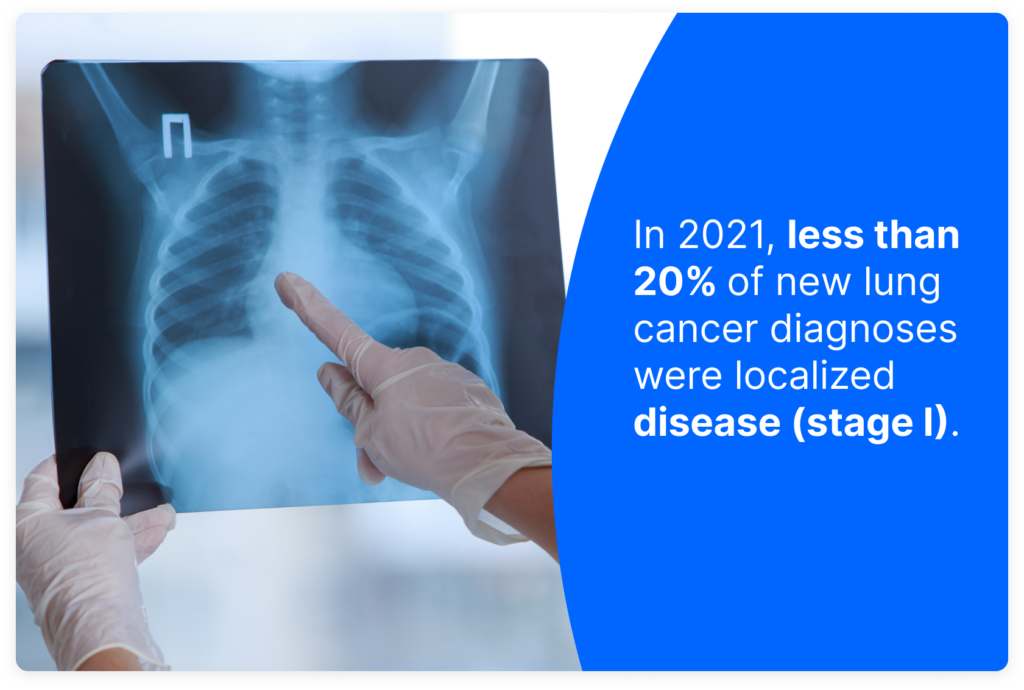Abdominal CT Scan with Contrast: What It Is and How It Works
February 29, 2024
Read More
Lung cancer has the third highest number of annual cancer diagnoses in the U.S. but also takes the most lives from cancer each year. November is Lung Cancer Awareness Month and November 12 is National Lung Cancer Screening Day. While it’s good to be aware of the disease, it’s better to do something to prevent it and to get diagnosed early, when it’s easier to treat.. Many screening centers are making it easier to take this important step by staying open this Saturday, in hopes that more people will take advantage of the convenient weekend screening option.
Not everyone needs to get screened, though. U.S. and Canadian health officials offer similar recommendations but with a few variations. The U.S. Preventive Services Task Force recommends that these people should get screened yearly:
The Canadian Task Force on Preventive Health Care (CTFPHC) recommends that this population should get screened every year for three years, including:
To calculate a pack-year, take the average packs of cigarettes smoked per day multiplied by the number of years you’ve smoked. If smoking one pack a day on average for 20 years, that would be 20 pack-years. Two packs daily for 10 years is also 20 pack-years.
Low-dose CT screening saves lives
While many imaging techniques can identify or diagnose new lung cancers, the CDC and CTFPHP both recommend low-dose CT scan (LDCT) as the appropriate screening test.
Research supports this recommendation. A foundational study conducted 2002-2009, from the National Lung Screening Trial, compared LDCT and chest X-rays in detecting lung cancer. Researchers enrolled 53,454 individuals who were at high risk for lung cancer, giving them three annual screenings with LDCT or chest X-rays. The study found that screening with LDCT reduced mortality from lung cancer, with certain early-stage lung cancers detected more frequently by LDCT, compared to chest X-rays.
Lung cancer screening was deemed by the President’s Cancer Panel as the most significant opportunity to reduce lung cancer deaths and prevent cancer through detection and removal of precancerous lesions. Yet only about 10% of those eligible receive these recommended lung cancer screenings. Partly that’s because doctors and other providers may not know to refer their patients for the screenings. But it’s also tough for people living in rural areas, and those who are uninsured or underinsured to access screening. Many people who are at risk for developing lung cancer also don’t know about the screenings and how they can help.

While it can be unsettling to get screened, knowing you might be diagnosed with lung cancer, getting a diagnosis at a later date is even worse. In the U.S., for example, only 20% of all lung cancer diagnoses were localized (stage I) disease in 2021. These cases are at a comparative advantage, with a 5-year survival of 61.2% but that figure falls to 33.5% for regional lung cancer, and drops further for those with more invasive cancers.
What to expect during an LDCT screening
A low-dose CT is an outpatient imaging study that is painless and takes 10 to 30 minutes. You will lie down on a table which is part of a machine shaped like a doughnut. You’ll be in the doughnut hole, where the scan is done. You may need to hold your breath at certain times so the machine can capture the lung area without movement. The scan uses specialized X-ray beams that show the doctor an image of a cross-section or slice of your lung. It is sometimes viewed 3-dimensionally, as the beams can create a series of images from different angles.
As this National Lung Cancer Screening Day approaches, ask your doctor about lung cancer screening. You don’t have to do the imaging study on the official day. But let it serve as a reminder to take care of your health and get the recommended imaging test if it’s right for you.
You can also keep a record of all your CT scans and reports with PocketHealth, which lets you digitally store and share your imaging records in one centralized hub. It takes away the waiting game by uploading your scans and reports shortly after your appointment, so you can view your results and send them off to your doctor, regardless of their hospital network, right away. The anxiety that comes from delays in care and appointments can impact your care experience, but PocketHealth helps to alleviate some of the stresses that often accompany cancer screenings.
—
Be prepared for your next lung CT scan appointment with PocketHealth. Access your scans and other past imaging here.